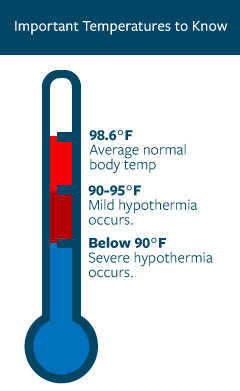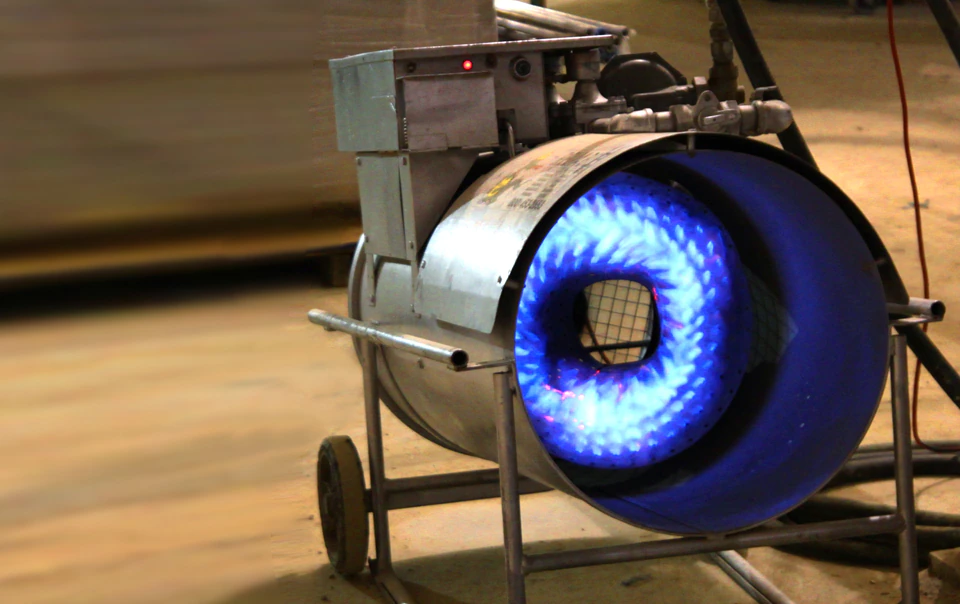Help Workers Stay Warm in Severe Cold Weather


Extreme cold can cause a number of health problems for employees during the winter months. Hypothermia and frostbite are just two conditions that may affect workers if the proper precautions are not taken.
Hypothermia occurs when a person’s core body temperature drops below 95°F. The condition is considered mild if a person’s core temperature is between 90 and 95°F. A person with mild hypothermia may show symptoms such as uncontrollable shivering, loss of dexterity, pale and cool skin, and incoherence.
Treating mild hypothermia
Start to treat mild hypothermia by moving the worker to a warm, dry environment. To prevent further heat loss cover their head and neck and provide extra clothes or blankets. Give the worker high-energy foods and warm liquids that do not contain caffeine or alcohol. Be sure to consult a physician as soon as possible.
Severe hypothermia occurs when a person’s core body temperature falls below 90°F. At this temperature, shivering stops and blood pressure, heart rate and respiration begin dropping. Symptoms of severe hypothermia include slurred speech, confusion, shallow breathing, unusual behavior and a slow, irregular heartbeat. In extreme cases, someone with severe hypothermia may not look alive.

Treating Severe Hypothermia
Severe hypothermia demands immediate medical attention. Mild heat (comfortable to touch at the elbow) should be applied to the worker’s head, neck, chest, armpits and groin. Attempt to keep the victim conscious. As much as possible, prevent them from moving. Movement circulates cold blood back to the heart and can worsen the worker’s condition.
People suffering from hypothermia should avoid smoking and stimulants such as caffeine and alcohol. Smoking decreases circulation to the extremities. Caffeine stimulates the heart and may cause it to circulate cold blood. Although alcohol can make a person feel warm, it actually causes the body to lose heat.
Frostbite is frozen and sometimes dead tissue that is caused by prolonged exposure to cold temperatures, usually below freezing. The extremities of the body (ears, nose, fingers, hands, toes and feet) are most often affected because the body reduces blood flow to them in an effort to maintain its core temperature.
Treating frostbite
Contrary to common belief, one should NEVER rub areas affected by frostbite. Rubbing actually increases the tissue damage. Instead, move the worker to a warm, dry area. Submerge the affected area in warm water (100 to 104°F) until it becomes red. Be sure to consult a physician as soon as possible.
Dressing for extreme cold weather
If workers must be outside in cold weather, they should dress in layers, including a hat, gloves and insulated boots. The inner layer of clothing should transfer moisture away from the skin (e.g., polypropylene or similar material), the middle layer should provide insulation and warmth (e.g., polar fleece or wool), while the outer layer should prevent wind, rain and snow from getting in. Air between the layers will provide additional warmth.
Staying dry in cold weather is crucial to avoiding hypothermia. If a person does get wet, quickly move the individual to a warm, dry area. Remove the wet clothing and cover the individual with dry clothes or blankets.
Nutrition is a critical part of combating hypothermia. The body needs food to sustain its core temperature. On cold days, workers should eat well-balanced meals rich in complex carbohydrates. The dry air in cold conditions can also cause dehydration, so it is important to drink plenty of fluids regularly.



